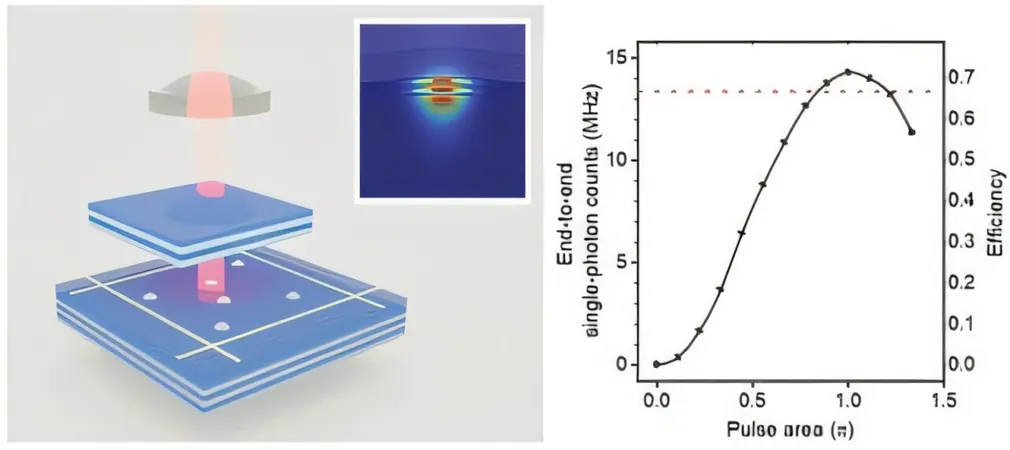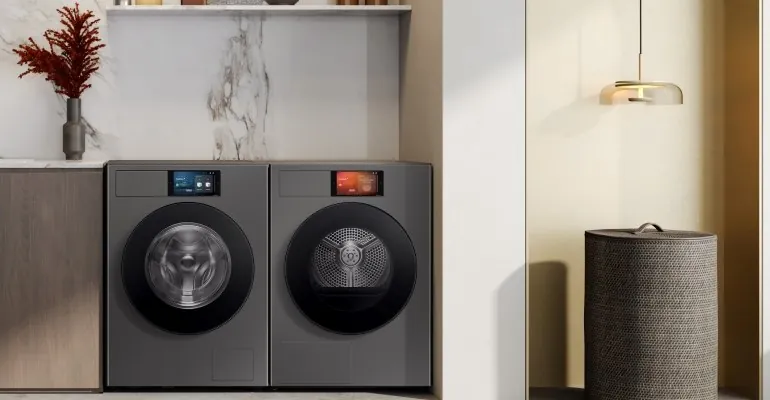
Breakthrough in Quantum Technology: Scientists Create Ultra-Efficient Single-Photon Source!
2025-04-07
Author: Nur
Introduction
In a groundbreaking development for the field of quantum computing, research teams from the University of Science and Technology of China (USTC) have successfully engineered a high-performance single-photon source that surpasses the crucial loss-tolerant threshold required for scalable linear optical quantum computing. This pivotal research was spearheaded by leading figures Prof. Pan Jianwei, Lu Chaoyang, and Hu Yongheng, and is detailed in a recent publication in Nature Photonics dated February 28.
Importance of Photons in Quantum Computing
Photons play a vital role as carriers of quantum information due to their swift transmission capabilities and resilience against environmental disturbances. However, the journey towards practical scalable linear optical quantum computing has been hindered by the challenge of photon loss—as well as the pressing need for a single-photon source that can achieve an efficiency exceeding the daunting 2/3 threshold. Previous advancements in this arena had consistently failed to reach this benchmark, representing a substantial barrier to the evolution of optical quantum computing technologies.
Innovative Design Breakthrough
To break through this long-standing challenge, the USTC teams innovatively designed a tunable open optical microcavity. This new design allows for precise coupling of quantum dots with microcavities, optimizing resonance frequency and spatial alignment, thus addressing the detuning issues associated with conventional fixed microcavities.
Enhanced Performance Metrics
Moreover, the researchers utilized specifically tailored laser pulse excitation on high-quantum efficiency single quantum dots, which significantly enhanced the performance metrics of the single-photon source. Remarkably, the device achieved single-photon properties exceeding 98.0%, with photon indistinguishability soaring to over 98.5%. The overall system efficiency was recorded at an impressive 71.2%, while extraction efficiency surpassed 80.6%, officially breaking the 2/3 loss tolerance threshold for the first time in history.
Additional Achievements
In addition to this impressive performance, the team reported an astonishing 1.89(14) dB intensity squeezing and managed to record consecutive 40-photon events at a count rate of 1.67 mHz.
Conclusion and Implications
This significant advancement paves the way for new possibilities in photonic quantum computing, bringing the scientific community one step closer to realizing the ideal single-photon source. The implications of this breakthrough could redefine numerous applications ranging from secure communication to powerful quantum computing systems, marking a pivotal moment in the quest for quantum information supremacy.




 Brasil (PT)
Brasil (PT)
 Canada (EN)
Canada (EN)
 Chile (ES)
Chile (ES)
 Česko (CS)
Česko (CS)
 대한민국 (KO)
대한민국 (KO)
 España (ES)
España (ES)
 France (FR)
France (FR)
 Hong Kong (EN)
Hong Kong (EN)
 Italia (IT)
Italia (IT)
 日本 (JA)
日本 (JA)
 Magyarország (HU)
Magyarország (HU)
 Norge (NO)
Norge (NO)
 Polska (PL)
Polska (PL)
 Schweiz (DE)
Schweiz (DE)
 Singapore (EN)
Singapore (EN)
 Sverige (SV)
Sverige (SV)
 Suomi (FI)
Suomi (FI)
 Türkiye (TR)
Türkiye (TR)
 الإمارات العربية المتحدة (AR)
الإمارات العربية المتحدة (AR)